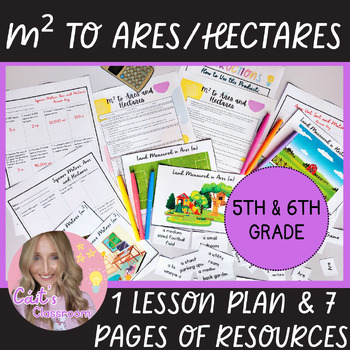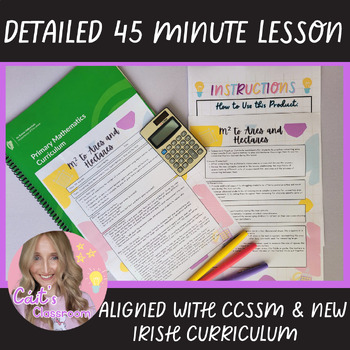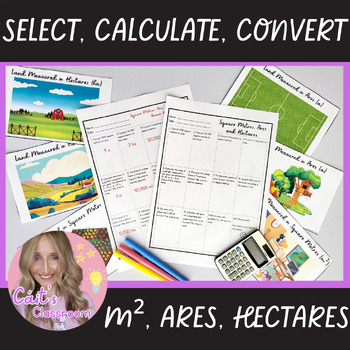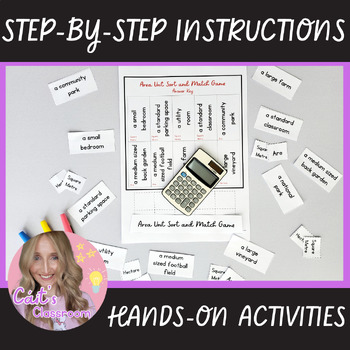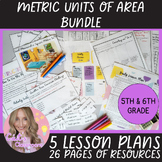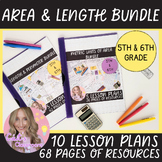Area Worksheets│Math Lesson Plan│Square Meters, Ares and Hectares│5th/6th Grade
- PDF
Also included in
- 5 Lesson Plans & 26 pages of activities/resources on measuring, calculating and converting area/surface area in metric units for fifth and sixth. Revolutionize your maths classes with this comprehensive resource covering topics such as:Measuring, calculating, and converting square metres to squaPrice $11.20Original Price $17.18Save $5.98
- 10 lesson plans & 68 pages of activities/resources on area, perimeter and length for fifth and sixth class.Revolutionize your math classes with this comprehensive resource covering topics such as:Measuring, calculating, and converting square metres to square centimetres.Calculating, converting,Price $26.40Original Price $40.53Save $14.13
Description
Complete lesson and accompanying activities/resources on area, focusing specifically on selecting, calculating and converting between square metres, ares and hectares. Designed for fifth and sixth grade, it aligns with the new Irish Primary Mathematics Curriculum (2023) and Common Core State Standards for Mathematics (CCSSM) for seamless integration into planning documents.
This resource includes an Area Unit Sort and Match game for selecting the correct unit, a main activity comparing, calculating and converting between the three units, and individual practice to consolidate key concepts. Say goodbye to prep stress and hello to an engaged classroom – grab your copy TODAY!
Benefits
- Reduces planning demands on teachers, saving valuable time and effort while being well-designed and aligned with curriculum standards.
- Offers a complete, print-and-go resource with step-by-step instructions, ideal for newly qualified teachers who want support teaching math to the senior grades.
- Enhances conceptual understanding andprocedural fluency in calculating and converting between square metres, ares and hectares.
In Depth Description
This 45-minute lesson plan includes:
- 1 Area Unit Sort and Match game and answer key.
- 6 visuals.
- 1 worksheet and answer key on converting between units of area measurement.
- 3 learning objectives.
- Differentiation strategies for both struggling and advanced students.
- Formative and summative assessment ideas.
- Key vocabulary and definitions.
- Explicit links to the new Irish Primary Mathematics Curriculum (2023), focusing on the element of applying and problem solving and the competencies of being mathematical, being an active learner and being an effective communicator.
- Explicit links with CCSSM
Mathematical Practice Standards:
- CCSS.MP6 - Attend to precision.
5th Grade:
- CCSS.5.MD.A.1: Convert among different-sized standard measurement units within a given measurement system (e.g., convert 5 cm to 0.05 m), and use these conversions in solving multi-step, real-world problems.
6th Grade:
- CCSS.6.RP.A.3 Use ratio and rate reasoning to solve real-world and mathematical problems.
Don't let this opportunity slip away! Elevate your teaching experience and engage your students - secure your complete lesson plan and resources TODAY!

